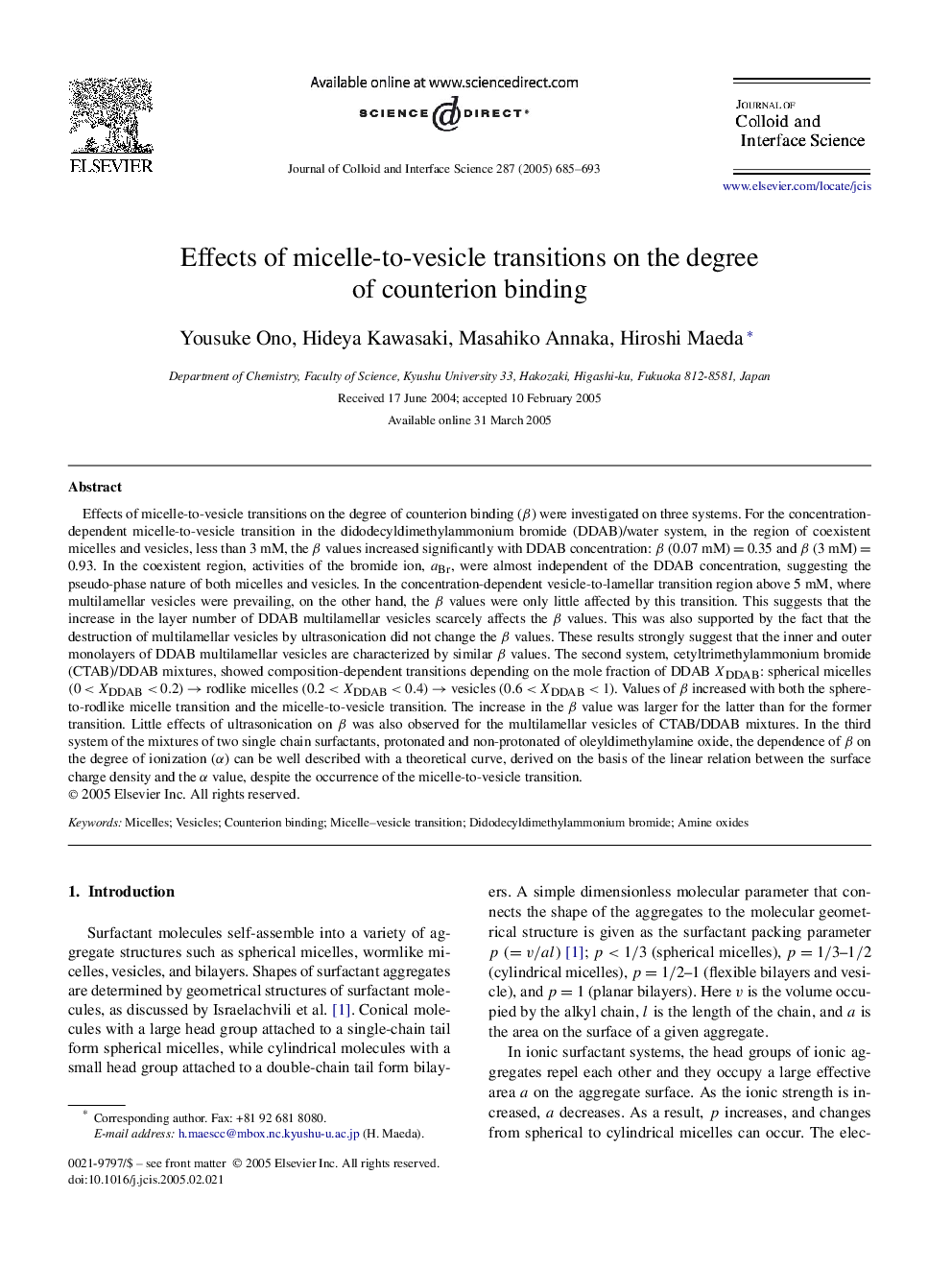| Article ID | Journal | Published Year | Pages | File Type |
|---|---|---|---|---|
| 10377797 | Journal of Colloid and Interface Science | 2005 | 9 Pages |
Abstract
Effects of micelle-to-vesicle transitions on the degree of counterion binding (β) were investigated on three systems. For the concentration-dependent micelle-to-vesicle transition in the didodecyldimethylammonium bromide (DDAB)/water system, in the region of coexistent micelles and vesicles, less than 3 mM, the β values increased significantly with DDAB concentration: β (0.07 mM) = 0.35 and β (3 mM) = 0.93. In the coexistent region, activities of the bromide ion, aBr, were almost independent of the DDAB concentration, suggesting the pseudo-phase nature of both micelles and vesicles. In the concentration-dependent vesicle-to-lamellar transition region above 5 mM, where multilamellar vesicles were prevailing, on the other hand, the β values were only little affected by this transition. This suggests that the increase in the layer number of DDAB multilamellar vesicles scarcely affects the β values. This was also supported by the fact that the destruction of multilamellar vesicles by ultrasonication did not change the β values. These results strongly suggest that the inner and outer monolayers of DDAB multilamellar vesicles are characterized by similar β values. The second system, cetyltrimethylammonium bromide (CTAB)/DDAB mixtures, showed composition-dependent transitions depending on the mole fraction of DDAB XDDAB: spherical micelles (0
Related Topics
Physical Sciences and Engineering
Chemical Engineering
Colloid and Surface Chemistry
Authors
Yousuke Ono, Hideya Kawasaki, Masahiko Annaka, Hiroshi Maeda,
